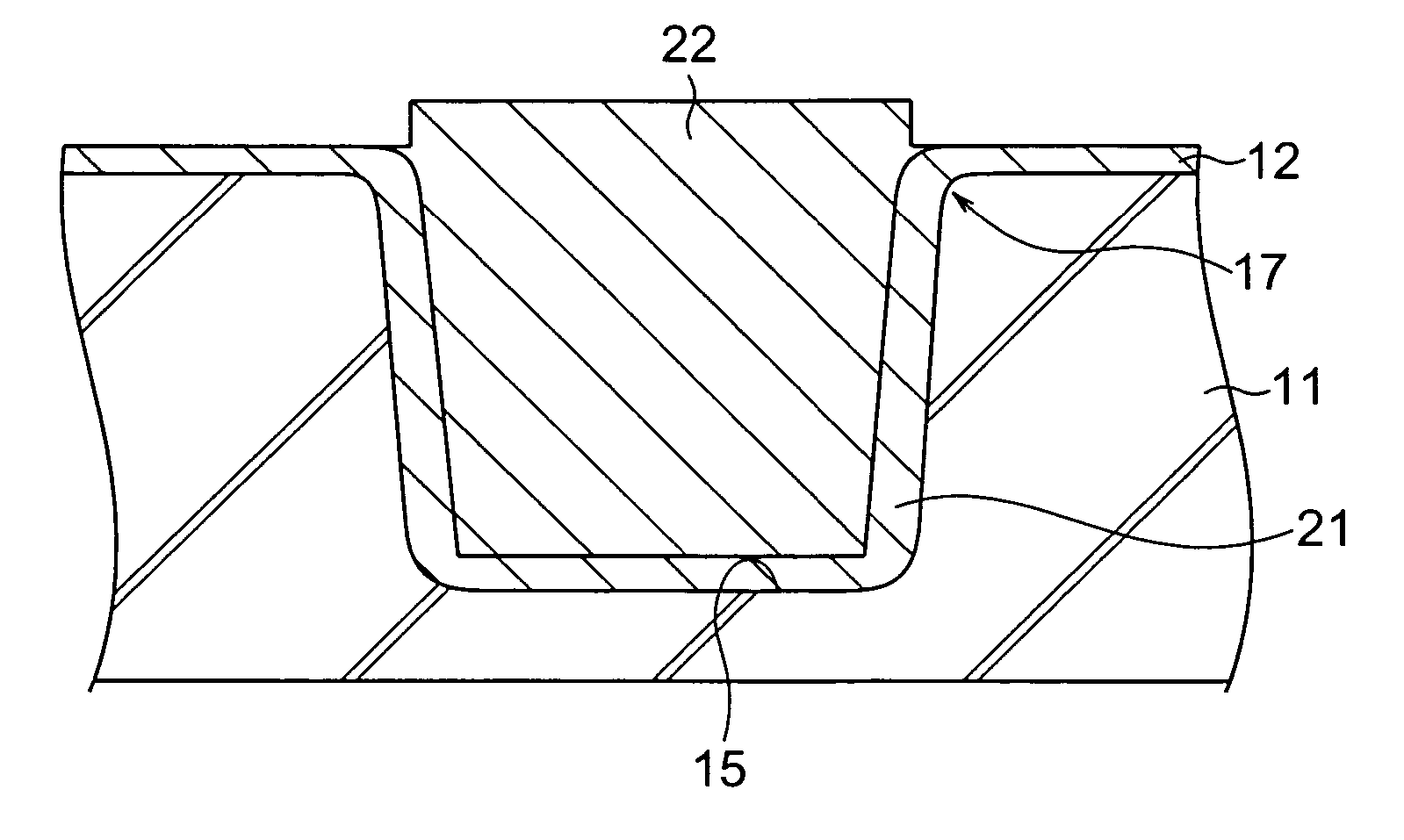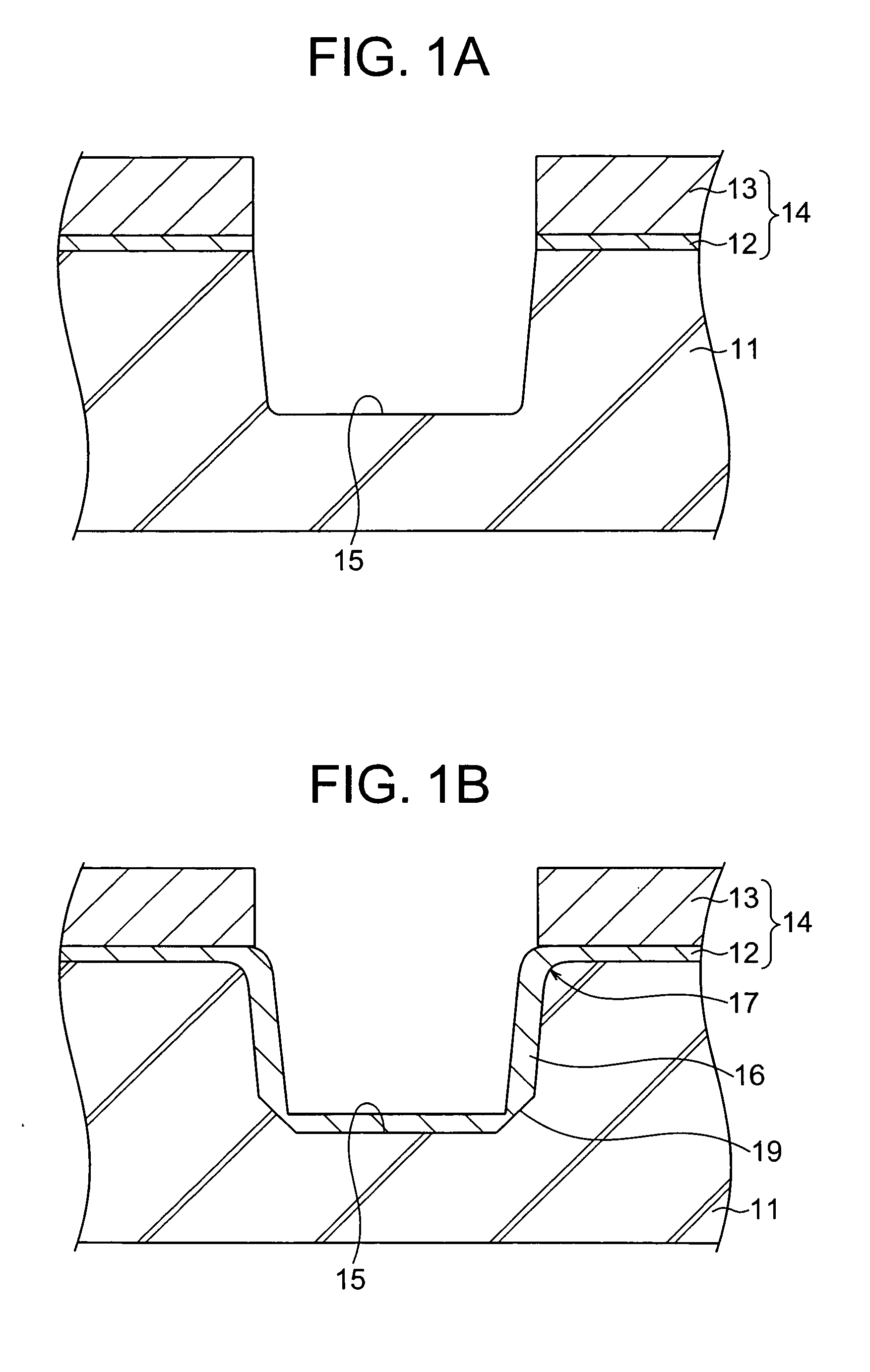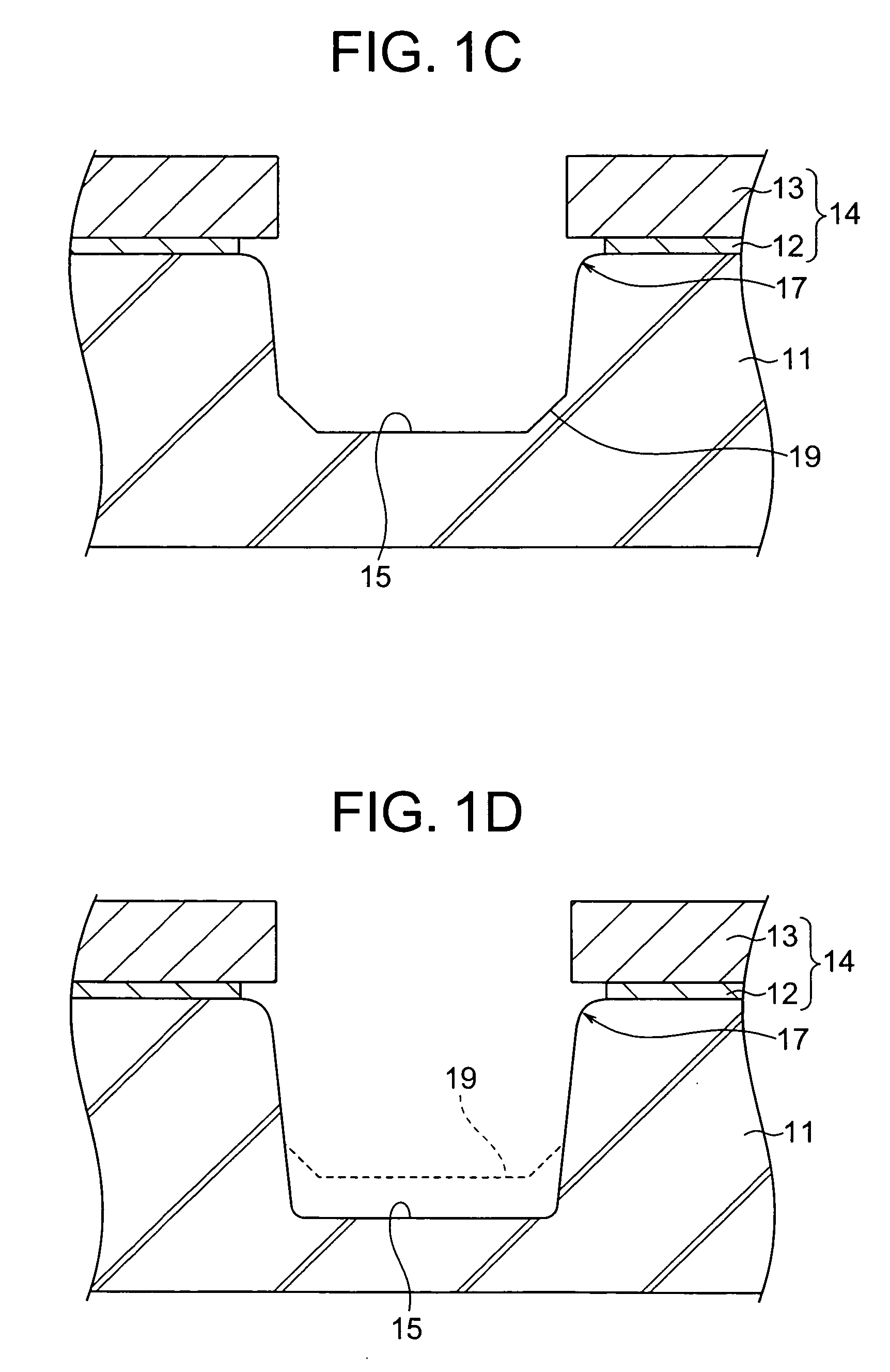Method for manufacturing a semiconductor device having a STI structure
- Summary
- Abstract
- Description
- Claims
- Application Information
AI Technical Summary
Benefits of technology
Problems solved by technology
Method used
Image
Examples
first embodiment
[0031]FIGS. 1A to 1H are sectional views showing consecutive steps of manufacturing a semiconductor device according to the present invention. First, an about 10-nm-thick pad oxide film 12 made of silicon oxide and an about 150-nm-thick pad nitride film 13 made of silicon nitride are consecutively formed on a silicon substrate 11. Subsequently, by using a known technique, the pad nitride film 13 and pad oxide film 12 are etched to form a combination mask 14 having a desired opening pattern. Then, a first anisotropic etching process is conducted using the mask 14 as an etching mask, to form a trench 15 having a depth of 200 nm as measured from the top surface of the silicon substrate 11, thereby obtaining the structure shown in FIG. 1A.
[0032] The first anisotropic etching process is conducted in an etching gas including O2, HBr and Cl2 and at a gas pressure of 10 to 50 Torr. The taper angle of the sidewall of the trench 15 with respect to a perpendicular to the main surface of the si...
second embodiment
[0049]FIGS. 6A to 6E show consecutive steps of manufacturing a semiconductor device according to the present invention. In this embodiment, the present invention is applied to a process for forming a gate electrode in a recessed channel array transistor. In the recessed channel array transistor, the gate electrode of a MOSFET has a portion received in a trench formed on the surface region of the silicon substrate, whereby the channel of the MOSFET extends along the bottom surface region of the trench to have a larger channel length.
[0050] A device isolation structure 23 is first formed on the surface region of a silicon substrate 11, followed by a thermal oxidation process to form an about 10-nm-thick protective oxide film 41 on the device region of the silicon substrate 11. Thereafter, a nitride film 42 is deposited to a thickness of 100 nm on the protective oxide film 41 by a CVD process. The protective oxide film 41 is formed to intervene in the direct contact between the silicon...
PUM
 Login to View More
Login to View More Abstract
Description
Claims
Application Information
 Login to View More
Login to View More - R&D
- Intellectual Property
- Life Sciences
- Materials
- Tech Scout
- Unparalleled Data Quality
- Higher Quality Content
- 60% Fewer Hallucinations
Browse by: Latest US Patents, China's latest patents, Technical Efficacy Thesaurus, Application Domain, Technology Topic, Popular Technical Reports.
© 2025 PatSnap. All rights reserved.Legal|Privacy policy|Modern Slavery Act Transparency Statement|Sitemap|About US| Contact US: help@patsnap.com



